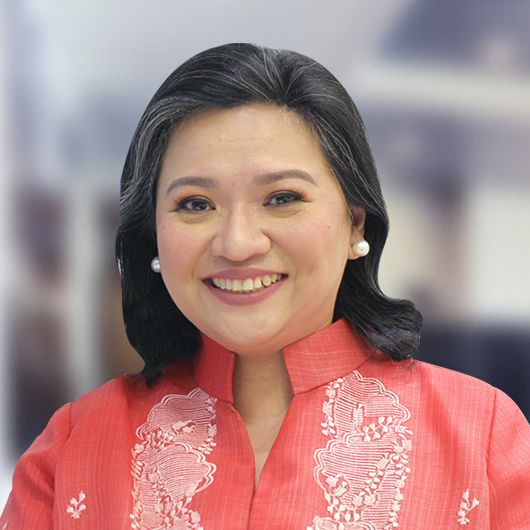As featured on BusinessMirror: The Future of HR
HR is in a state of flux. Global volatility and uncertainty have driven a focus on how to steer through the next few years and increase the business value from HR. It is a journey from flux to flow.
The labor market is experiencing acute shortages of key skills, as employees go through the ‘Great Reconsideration’. Meanwhile, boards want more from HR. They’re demanding a connected, digitally enabled, and analytics-led function that can support the business’s wider aims.
KPMG in the Philippines Chairman and CEO and Head of People, Performance and Culture Sharon G. Dayoan shares, “This so-called ‘Great Reconsideration’ means HR functions need to remain one step ahead to attract, retain and provide their people with compelling reasons to commit to their organization.”
Work is more dynamic than ever, and this means that the workforce’s structure, skills, organization, and size of today are not the workforce of tomorrow.


Employees now have wider societal, economic and environmental considerations that they demand from their employers. Thus, it is essential for employers and leaders to show their concern by listening to their people and responding proactively to such challenges.

Sharon G. Dayoan
Chairman and CEO
KPMG in the Philippines
Organizations then must transform to respond and cater to these changes and challenges.
KPMG surveyed 300 HR leaders and interviewed 12 organizations leading their peers in the future of HR. We discovered that, while each HR function needs to find its way, there are common themes in addressing the challenges faced by the function today.
Our latest research found Pathfinders – those HR functions forging a path through this changing landscape – are less concerned with what others do and say about people management.
Instead, they’re building the capabilities needed for their marketplace, and to deliver their firm’s strategy. They’re providing people insights to enable decision-making. And they’re embedding themselves into other business functions and the C-Suite, to allow the value of HR to benefit the whole company.
As they do so, the HR Pathfinders have identified, and are focusing on, six critical priorities for the next three years:
Flow
HR Pathfinders enable the strategic value they generate to flow throughout the organization, by integrating closely with the wider business and the C-suite.
Digital
Legacy solutions and processes won’t cut it in a competitive labor market. That’s why Pathfinders have moved beyond technology implementation. They’re integrating digital to make workflow effective and offer a seamless employee experience.
Analytics
Leading HR organizations aren’t content-tracking KPIs on dashboards. They answer the questions the business is asking, using data from outside the function and relational analytics techniques. As a result, they produce insights that benefit strategy, engagement, retention, and development.
Talent
The use of Talent marketplaces to match skills to tasks is at an early stage, even in the most innovative HR functions. But the foundational importance of managing and developing skills in the enterprise is critical for Pathfinders and will bring a competitive advantage for them.
Purpose
HR Pathfinders are taking the lead on organizational purpose – by defining it and making it real for their people. They’re embracing ESG and ensuring that net zero flows through every part of the organization.
Wellbeing
Leading HR functions put employee well-being center stage. They view it holistically and bring innovative approaches to help people perform at their best.
Where next?
With inspiration from the activities of our Pathfinders, there are plenty of ways to consider how their approaches could be adapted to the unique setup of your function
Deliver on strategy. Focus on aligning HR operations and processes in a way that can help support and drive the overarching organizational strategy. Bringing together key HR capabilities such as organizational design; workforce analytics and planning; culture change; and agile delivery, under one roof, can help to drive this seamlessly.
Integrate digital operations. Move from focusing on technology to facilitate basic needs and instead look at how it can enhance HR effectiveness and the employee experience. One holistic way to do this is to support the use of the right technology as a base for a ‘digital headquarters,’ making the organization accessible to everyone, and connectivity and communication seamless. Another way is to use apps to make engagement with employees two-way so that they have easy access to HR, and you are involved in a continual feedback loop that can feed decision-making. Amid these efforts, consider how technology is impacting the lives of your people, and implement aligned support such as ‘Hybrid Personas’ for remote work.
Advance your analytics. Push beyond using ‘rear view mirror’ analytics for traditional HR needs such as retention, attrition, and engagement. Instead, work with more comprehensive data sets and relational analytics capabilities to answer the big questions leaders have about people in the business. Creating a hypothesis, correlating quantitative and qualitative insights, then finding unique answers can make a big impact on decision-making and actions. It is also possible to treat your employees as the ‘customer’ of relational analytics and use what the findings tell you about their needs to create products and services that enhance their experience.
The excerpt was taken from the KPMG Thought Leadership publication: https://home.kpmg/xx/en/home/insights/2022/11/the-future-of-hr-from-flux-to-flow.html
© 2023 R.G. Manabat & Co., a Philippine partnership, and a member firm of the KPMG global organization of independent member firms affiliated with KPMG International Limited, a private English company limited by guarantee. All rights reserved.
For more information, you may reach out to Chairman and CEO Sharon G. Dayoan through ph-kpmgmla@kpmg.com, social media, or visit https://kpmg.com/ph/en/home.html
This article is for general information purposes only and should not be considered professional advice to a specific issue or entity. The views and opinions expressed herein are those of the author and do not necessarily represent KPMG International or KPMG in the Philippines.
